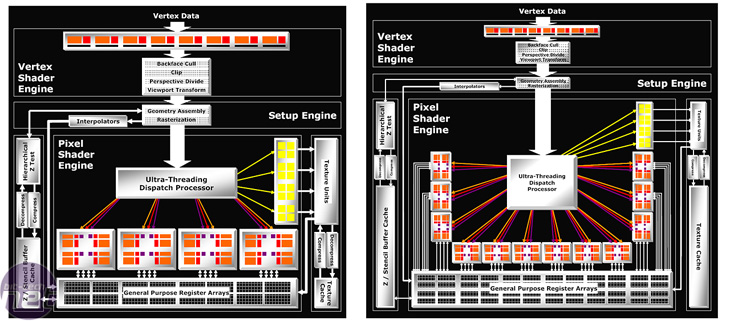
A New Year brings a breath of fresh air...
Today, ATI is announcing its latest and greatest addition to its Radeon X1000-series video card lineup. Unlike previous launches, ATI and its partners have promised us that there will be availability and indeed there is. More on that later, but it is good to see that ATI have been able match NVIDIA's recent performance of hard launches.Another recent criticism is that ATI customers have had to wait for CrossFire Edition cards to turn up a long while after the initial CrossFire-ready cards had shipped. Unfortunately, we have had several board partners suggest that CrossFire will not be made available today, so we will have to see how quickly ATI can turn this around.
We have already covered the architectural features that make up Radeon X1000-series, so we won't spend time going over them in great detail again. The major focus of the architecture revolves around dynamic flow control, pixel shader efficiency, ultra threading and improved memory efficiency too. In fact, ATI's Radeon X1000-series GPUs run at full precision all of the time too and have image quality enhancing features like adaptive antialiasing, temporal antialiasing and high quality anisotropic filtering.
Some may wonder why ATI has launched Radeon X1900-series so soon after launching Radeon X1800-series, seeing as R520 was launched just over three and a half months. Many will also know how well-documented the R520 delays were; due to a soft grounding problem that was preventing the GPU from achieving ATI's expected clock speeds. This meant that R520 was delayed by at least three months. However, ATI didn't want the R520 delays to affect their future roadmaps - this is why Radeon X1900-series is being released today.
The architecture has had some minor changes in order to increase the mathematical calculation capabilities of the GPU, meaning that more pixel shader operations can be completed in the same number of clock cycles. It's getting increasingly hard to directly compare competing products against each other and R580 takes things one step further.
Instead of what could be considered as a conventional pixel pipeline - consisting of one pixel shader, a texture unit and a pixel output engine - ATI has opted to include three pixel shaders, one texture unit and a single pixel output engine. This makes a total of fourty-eight pixel shader processors, sixteen texture units and sixteen pixel output engines to go together with the eight vertex shaders that have remained unchanged in the path between R520 and R580.
ATI stated that the reason behind this is because modern games are making use of more and more pixel shader operations while the texturing operatings remain reasonably constant by comparison. For example, the likes of F.E.A.R. and Splinter Cell: Chaos Theory have a shader-to-texture operation ratio of 7:1 and 8:1 respectively. Incidentally, the average ratio is approaching 5:1. ATI believes this is only going to increase over time, as more complex pixels are required to edge ever closer to that cinematic high definition gaming experience that game developers are working towards.

MSI MPG Velox 100R Chassis Review
October 14 2021 | 15:04








Want to comment? Please log in.